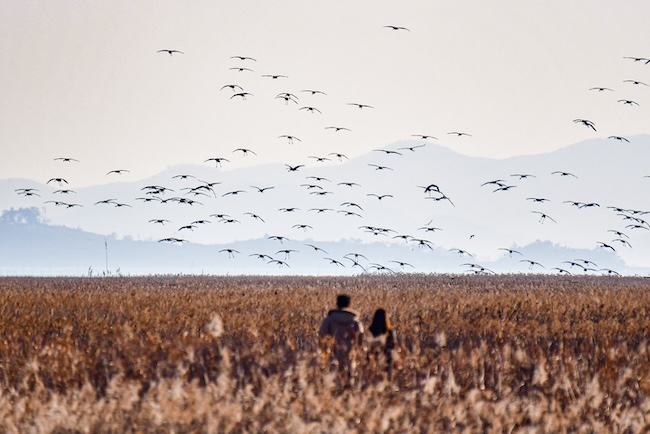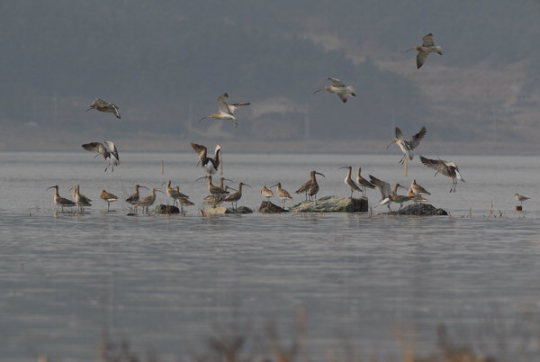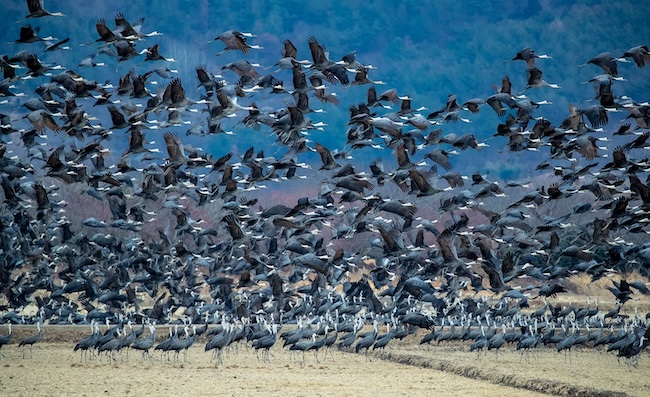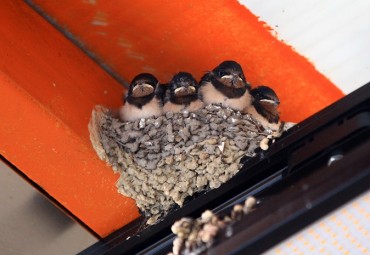SUNCHEON, Nov. 26 (Korea Bizwire) – Suncheon Bay in South Jeolla Province has become a sanctuary for migratory birds, particularly the black-faced spoonbill, drawing global attention as a premier bird-watching destination.
According to Suncheon City officials, the bay has seen a remarkable increase in wintering black-faced spoonbills, a species once predominantly found in Japan.
In the early 2000s, over 90% of the population resided in Japan, but today, a significant portion migrates to Suncheon Bay, signaling a broader conservation success by diversifying the species’ habitats and reducing extinction risks.
Restoring Nature to Welcome the Spoonbills
The transformation began in 2006 under the leadership of then-Mayor Roh Kwang-kyu, who spearheaded a bold ecological restoration initiative. The city removed restaurants, duck farms, and homes near the bay to recover its natural state.
In 2009, 282 utility poles in a 59-hectare area were dismantled to prevent fatal collisions, identified as a leading cause of spoonbill deaths. The city even designated the spoonbill as its official bird, replacing the dove, and transitioned local agriculture to eco-friendly practices.
Such efforts bore fruit: the spoonbill population in Suncheon Bay surged from 400 in 2009 to 3,400 in 2021. By 2022, the bay offered refuge to 6,000 birds fleeing a bird flu outbreak in Izumi, Japan. The trend continued, with over 7,600 spoonbills recorded this year, representing nearly half of the global population.
A Bird-Watcher’s Paradise
The black-faced spoonbills are not the only attraction. Visitors can spot other species, including red-crowned cranes, hooded cranes, and Canada cranes. The Ramsar Ecological Trail, a restored dirt path extending 5.8 kilometers, has become a popular spot for observing these majestic birds.
The spoonbills, known for their wariness, have moved closer to observation areas, reducing the viewing distance from 150 meters to just 80 meters, allowing enthusiasts to enjoy sightings with the naked eye.
Tailored Programs to Foster Ecotourism
To accommodate growing interest, Suncheon will run winter bird-watching programs from December through April. Visitors can engage in self-guided telescope observation or join guided “sound tours” to experience the bay’s natural symphony. Early risers can participate in “walking tours” along key bird habitats, with tours capped at 15 participants per session.
“Bird-watching is regarded as a sophisticated hobby on par with golf in the U.S. and Europe,” said a city official. “It’s a unique opportunity for people of all ages to disconnect, immerse themselves in nature, and create lasting memories.”
Suncheon Bay’s successful transformation underscores the power of deliberate ecological restoration, turning it into a global bird-watching haven and a beacon of environmental stewardship.
Image credit: Suncheon City / photonews@koreabizwire.com











